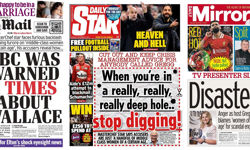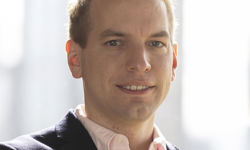The theme of this year’s AOP Autumn Conference, was ‘Creativity, Context and Trust’.
In her keynote address, Kate Adie was happy to focus on ‘context’ and ‘trust’. ‘Creativity’ in the world of news reporting, she had some issues with…
Trust is the foundation stone of any serious news operation, but is under great pressure from two sides; firstly the desire by many news organisations to be first with the news and secondly, a lack of resources which means that many are failing to exercise journalistic best practice.
These twin pressures mean that publishers and broadcasters are increasingly relying on unverified single sources (often over the phone) and press releases and this is having a detrimental effect on the quality of their news reporting.
People lie, people have their own agenda, people get things wrong. Ditto, and more so, for governments. Is it really wise for a desk-bound journalist to publish a story based on phone information from one source? How likely is it to be accurate?
As for press releases, Kate was particularly scathing about the PR industry, which she said “has at its heart a certain type of corruption. The industry exists to put a gloss on things, to put one side of the story.” She found it very worrying that more and more publishers are putting out press releases as news.
The result of rushed, unverified reporting is a steady decline in the accuracy of our new output, the erosion of public trust in what they read and hear and the deterioration in the nature of public discourse as a whole.
“We all have an obligation to do it truthfully; we have to think very carefully about the concepts of truthfulness and accuracy.”
But, aside from ethical considerations, does this really matter? As long as the traffic keeps coming, everything’s ok, right?
Err… no. “The general public are not fools.” We are ourselves very good at verification. We all talk and spread information; if we spread news that turns out to be wrong, then our trust in the news source we got the information from gets eroded and we stop using them. That’s not good for business.
News organisations need to be trustworthy, and their first stab at a story has to be accurate, otherwise trust dissipates rapidly.
Kate has four rules for building trust, which she says are as relevant now as when she first started out in journalism in the sixties:
1. Get to the heart of the story
2. Be an eyewitness
3. Verify the facts
4. Then broadcast as fast as possible
“Getting there, being an eyewitness is vital. It’s often difficult, and it’s never glamorous,” says Kate. “The reality is that for any one incident, there will be five different versions. Being there, seeing with your own eyes, talking to a range of people is the best way to establish the truth.”
Kate acknowledges that traditional media is changing quickly and all are under huge pressure, particularly with funding. Producing accurate, trustworthy news does not come cheap and requires patience, often holding back from publishing while others rush in. They might not be first with the news, but, Kate believes, publishers who focus on getting it right will be the winners in the long run.
On a broader societal point, Kate thinks we need vastly more information about where the information we receive actually comes from, to enable the public to become better informed as to the veracity, or not, of their sources of news. Young people should be trained on how to verify news, and untrustworthy sites should be named and shamed.
And finally, a takeaway from China… “Governments don’t like full information. Repressive regimes try to counter it and therefore it is ever more important that publishers are honest, factual and get their facts right and go to primary sources.”
The Chinese government apparently employs 1.5-2 million people to control the internet. Kate recalls how she was once approached by a senior member of the Chinese government, who told her that there had been no slaughter in Tiananmen Square in 1989, it was a myth.
To which, Kate replied: “I was there and you’re a liar.”
The powerful combination of eyewitness testimony from a respected journalist, working for a trusted news organisation provides a lesson for us all in this rush-to-publish world.












